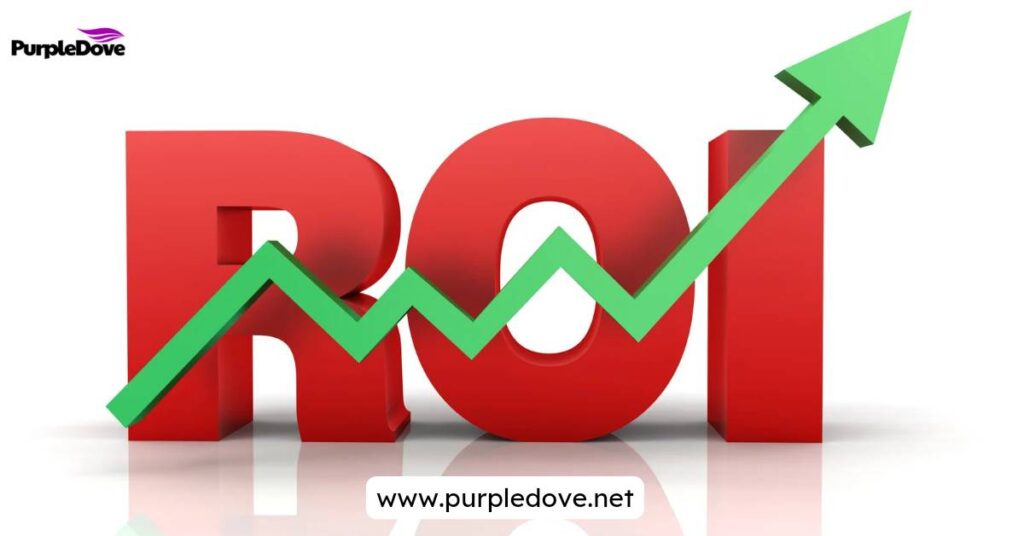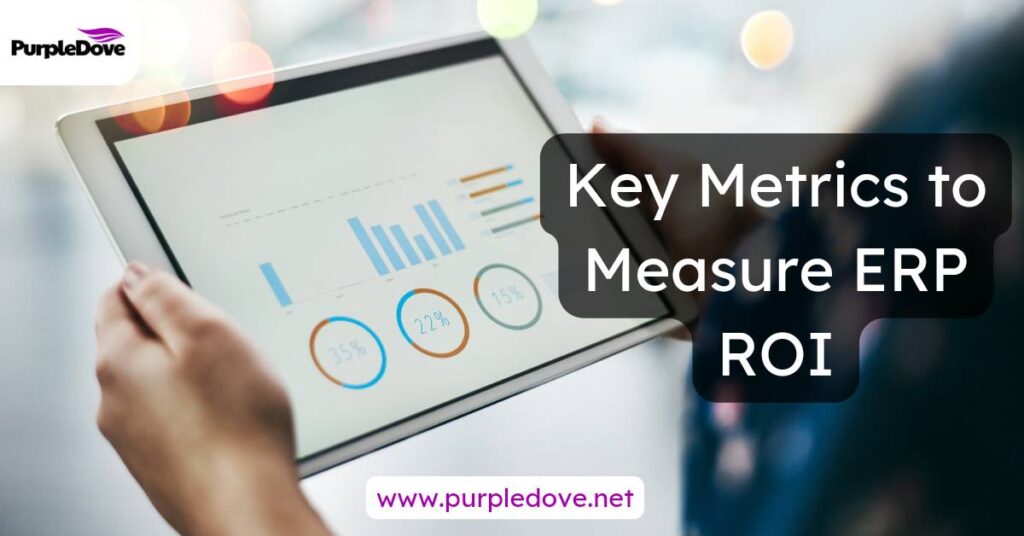
Enterprise Resource Planning (ERP) systems are essential for streamlining various business processes, making operations smoother and more efficient. But after investing in and implementing an ERP, how can you determine if it’s truly paying off? The answer lies in measuring the Return on Investment (ROI). By doing so, you can assess whether the benefits justify the costs and understand the system’s impact on your business operations.
This article will walk you through calculating ROI for ERP (how to measure the success of your ERP implementation), covering key metrics to consider and challenges that come with evaluating the success of your ERP system.
What is ROI in ERP Implementation?
ROI in ERP implementation represents the return your company gets from its investment in the ERP system. It helps you gauge whether the system is meeting your business goals, such as cutting costs, boosting efficiency, and driving revenue.
Since ERP systems require a significant commitment of time, money, and resources, calculating ROI gives you a clear indication of whether the investment is worthwhile. While many people assume ERP ROI is solely about financial gain, it also encompasses non-monetary benefits like better productivity, enhanced decision-making, and improved customer satisfaction. These may be harder to measure, but knowing how to measure the success of your ERP implementation is just as important.
Key Metrics to Measure ERP ROI

Several key metrics will help you know how to measure the success of your ERP implementation and capture the full value of your ERP implementation. These metrics include both tangible and intangible aspects of your system’s performance:
- Cost Savings: One of the easiest metrics to track is financial savings. Automating repetitive tasks, reducing human error, and optimising resources can save your business time and money.
- Productivity Gains: Another vital metric is how much more productive your employees become after the ERP goes live. Are tasks completed more efficiently? Is the workflow faster and smoother?
- Time Savings: Look at how much faster your business operations are. Has the ERP system reduced the time it takes to complete orders, process payments, or manage your supply chain?
- Customer Satisfaction: Happy customers mean repeat business. A well-functioning ERP can improve customer service by speeding up order processing, making deliveries more timely, and resolving issues more efficiently.
Steps to Calculate ERP ROI
To calculate ERP ROI effectively, follow these key steps:
- Step 1: Calculate the Total Cost of Implementation
Begin by summing up all costs related to the ERP implementation. This includes the purchase of software and hardware, consultant fees, and any recurring costs for maintenance or training. - Step 2: Identify Tangible Benefits
Next, identify the specific benefits your ERP has provided. These might include lower labour costs, improved sales performance, or fewer inventory mistakes. - Step 3: Quantify the Benefits
Put a number on those benefits. For example, if automating a task saves your team 10 hours a week, calculate the value of that saved time. - Step 4: Calculate ROI
Use the formula:
ROI=(Benefits−Costs)/Costs×100
This will give you a percentage that represents your ROI. A positive number means your ERP is providing value, while a negative number suggests it’s not delivering as expected.
- Step 5: Consider Long-term Gains
- Keep in mind that some benefits, especially those related to growth and scalability, take time to materialise. It’s important to track performance over the long term to fully understand the ROI.
Common Challenges in Measuring ERP ROI
While measuring ROI is necessary, it’s not always easy. One challenge is assigning a monetary value to intangible benefits, such as better decision-making or improved teamwork.
Another issue when considering how to measure the success of your ERP implementation is that some benefits might not appear immediately. It can take months, or even years, for the full impact of the ERP system to show up in your bottom line, making short-term ROI evaluations tricky.
Tools for Tracking ERP ROI Over Time
To get the most out of your ERP, regularly monitor its performance using a variety of methods:
- ERP Dashboards: Most ERP systems include dashboards that allow you to track productivity, cost savings, and other performance metrics in real time.
- Regular Audits: Conduct post-implementation reviews to ensure your ERP is being used to its full potential and is delivering value as expected.
- Benchmarking: Compare your system’s performance with industry standards to see where you stand and identify areas for improvement.
Maximising ERP ROI
Getting the best ROI from your ERP doesn’t stop after implementation. Here are a few tips to ensure you continue to reap the benefits:
- Train Your Employees: Make sure everyone knows how to use the system efficiently. Regular training ensures your staff is getting the most out of the ERP’s features.
- Customisation: Tailor the ERP to fit your business’s specific needs. This will enhance the system’s functionality and efficiency.
- Review Periodically: Don’t just set it and forget it. Regularly assess how well the system meets your business goals and look for opportunities to improve performance.
Conclusion: Why ERP ROI Matters
Measuring the ROI of your ERP implementation is crucial for determining whether the system is delivering value to your business. By tracking key metrics, both financial and non-financial, you’ll be able to see how the ERP system is improving your operations.
At PurpleDove ERP, we offer a tailored, cost-effective solution designed to meet your business’s unique needs. Our ERP system is built to provide long-term value, helping your business scale and grow while delivering a strong ROI. Contact us today to see how PurpleDove ERP can maximise your business’s potential.
